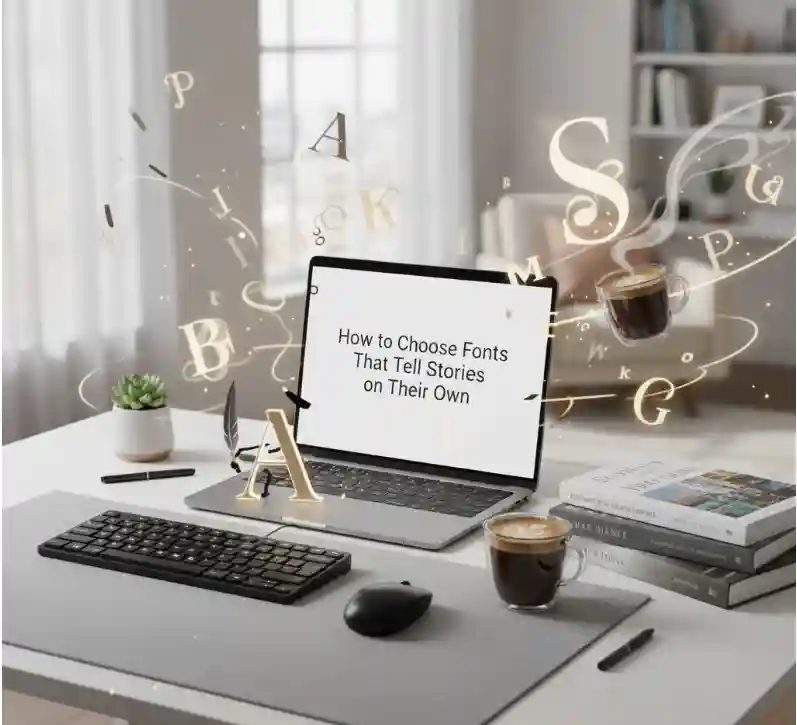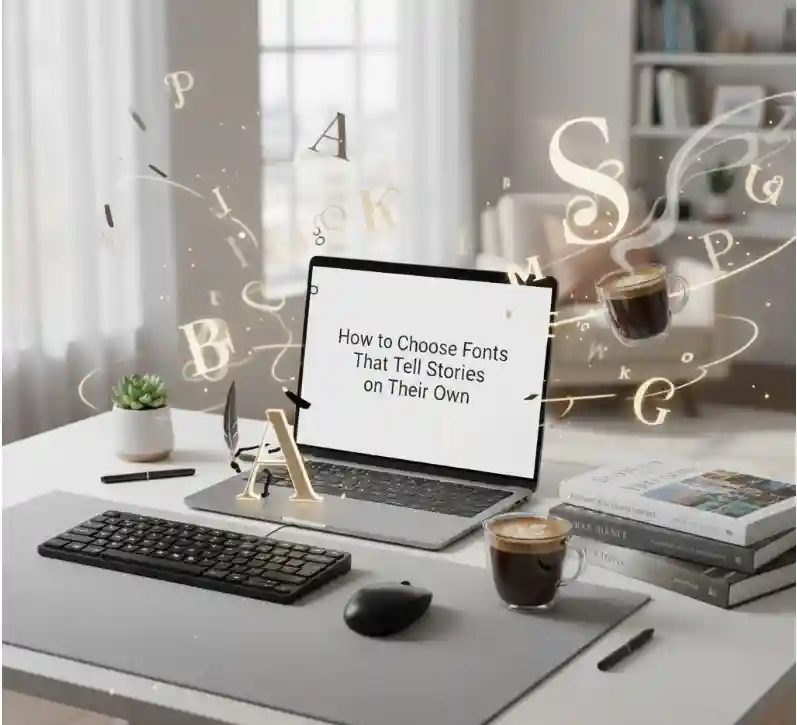Table of Contents
- Introduction: Typography as Narrative
- Why Fonts Carry Emotional Weight
- The Psychology Behind Typography
- How to Choose Fonts That Reflect Emotion
- Matching Fonts with Genre and Mood
- Practical Tips for Designers
- Recommended Storytelling Fonts from RaisProject
- Conclusion: Let Type Speak

1. Introduction: Typography as Narrative
Fonts are more than visual design elements — they are silent narrators. A single typeface can carry mood, character, and emotion before any words are even read. In visual storytelling — whether in posters, film titles, book covers, or branding — typography becomes part of the narrative itself.
At RaisProject, we believe fonts shouldn’t just look beautiful — they should speak. Each curve, line, and serif is crafted to convey emotion and meaning that enhances your story.
2. Why Fonts Carry Emotional Weight
Before a viewer reads a single word, they feel the design. A font can evoke trust, playfulness, drama, or nostalgia. Typography sets the emotional tone just as music sets the mood in a movie.
As discussed in Letterhend’s article “Typography in Film: How Fonts Orchestrate Emotion in Storytelling”, typefaces orchestrate the rhythm and emotion of visual storytelling.
In design and branding, numerous studies show that typography plays a major role in perception and credibility.
For instance, Adobe’s blog Understanding the Psychology of Font explains how letterform shapes and weights subconsciously trigger emotional responses. Similarly, Font Psychology: Everything You Need to Know About Fonts from Designmodo highlights how typography influences how audiences feel and react to content.

3. The Psychology Behind Typography
Typography works on a subconscious level. Each font category carries emotional and psychological connotations:
- Serif fonts convey tradition, authority, and reliability — ideal for classic or historical storytelling.
- Sans-serif fonts express modernity, simplicity, and openness — perfect for minimalist or tech narratives.
- Script and calligraphy fonts feel personal, emotional, and romantic — excellent for heartfelt storytelling.
- Display fonts communicate energy, uniqueness, and personality — great for titles and expressive design.
Research has even quantified this effect. Studies like Font Appropriateness and Brand Choice show that consumers are more drawn to brands whose typography “feels right.”
Similarly, academic work such as Font Shape-to-Impression Translation explores how local letter shapes evoke subjective impressions like elegance, tension, or strength.
In short — typography doesn’t just decorate words; it communicates their soul.
4. How to Choose Fonts That Reflect Emotion
To choose fonts that tell stories on their own, start by identifying the emotion you want to evoke.
Ask yourself:
- What emotion should my audience feel — trust, excitement, elegance, mystery?
- What kind of story am I telling — romantic, futuristic, corporate, or nostalgic?
- Where will the typography appear — a poster, website, book, or product packaging?
For an excellent resource, check out How to Choose a Font for Your Brand by TypeType, which explains how to align font characteristics with brand storytelling.
5. Matching Fonts with Genre and Mood
The right font can instantly establish tone and context. Think of fonts as casting choices — each must fit its role.
| Genre / Theme | Recommended Font Style | Example from RaisProject |
|---|---|---|
| Romance / Editorial | Script / Calligraphy / Elegant Serif | Dariena Floralie Font |
| Action / Sci-Fi | Display / Techno / Bold Sans | Glitch Zone Font |
| Fantasy / Adventure | Serif / Handcrafted | Legend Hunter Font |
| Modern / Minimalist | Clean Sans-Serif | Rodger Arnoud Font |
| Speed / Motion Design | Bold Sans / Racing Typeface | General Racing Font |
When typography aligns with genre, the audience intuitively understands the mood — even before reading a single word.
6. Practical Tips for Designers
A few expert techniques to ensure your typography elevates your story:
- Limit your font palette. Two fonts per project (headline + body) are often enough.
- Use hierarchy. Employ different weights, sizes, and spacing to guide the reader’s eye.
- Mind readability. A beautiful font that’s hard to read defeats its purpose.
- Test in real context. Preview your design on the actual medium — screen, print, or poster.
- Maintain consistency. Fonts should harmonize with other design elements to preserve visual unity.
- Mind licensing and character support. Ensure your chosen font fits commercial use and includes necessary characters.
Typography is not just about choosing pretty letters — it’s about designing emotion with purpose.

7. Recommended Storytelling Fonts from RaisProject
Here are five handcrafted fonts from RaisProject that perfectly embody the art of visual storytelling:
- 🎨 Dariena Floralie Font — an elegant calligraphy font that expresses romance and warmth.
- ⚡ Glitch Zone Display Font — a futuristic display font ideal for tech or gaming design.
- 🕯️ Legend Hunter Font — a serif typeface with a bold, adventurous spirit.
- 🧩 Rodger Arnoud Font — a modern sans-serif with clarity and balance, perfect for minimalist projects.
- 🏁 General Racing Font — a sleek, bold sans-serif conveying motion and energy.
Each RaisProject font is handcrafted to merge emotional expression with functional clarity — designed to help your story speak through type.
8. Conclusion: Let Type Speak
Choosing fonts that tell stories on their own is about more than style — it’s about emotional resonance. When your typography aligns with your message, it amplifies meaning, emotion, and connection.
A truly powerful design speaks even before a word is read — through the silent voice of its typography.
At RaisProject, we craft fonts that do exactly that — fonts that communicate, inspire, and elevate your visual storytelling.
👉 Explore our full handcrafted collection at www.raisproject.com and let your next project speak from the heart.
